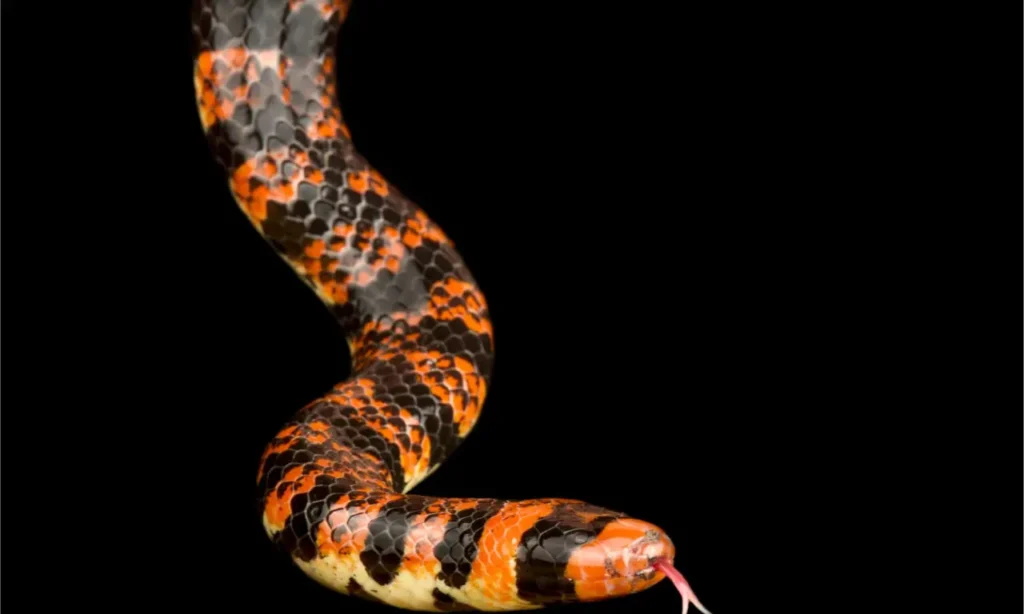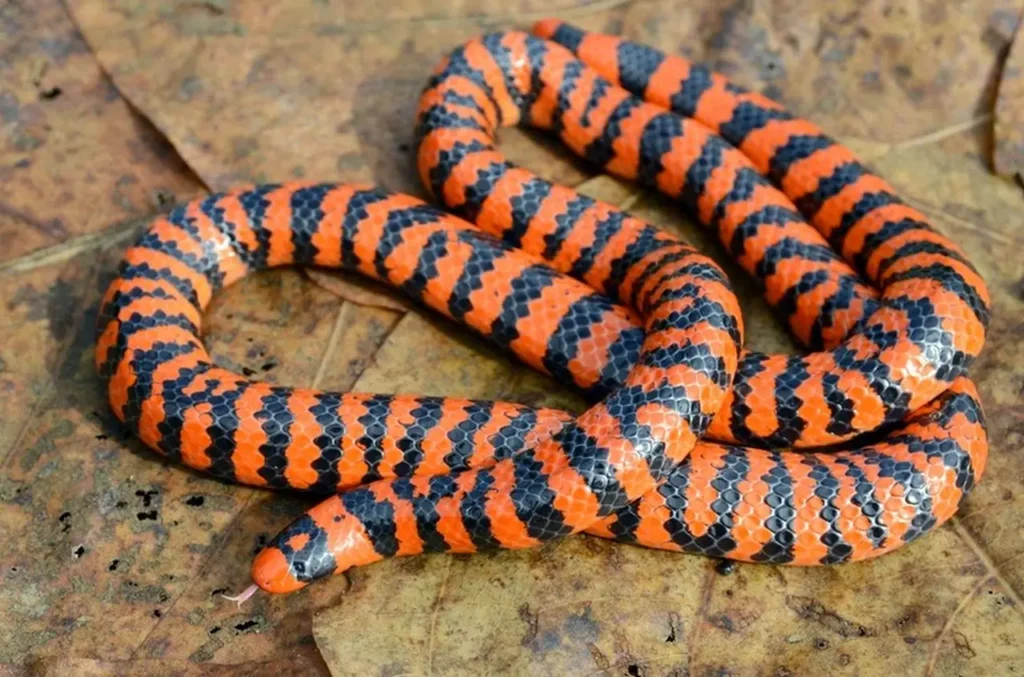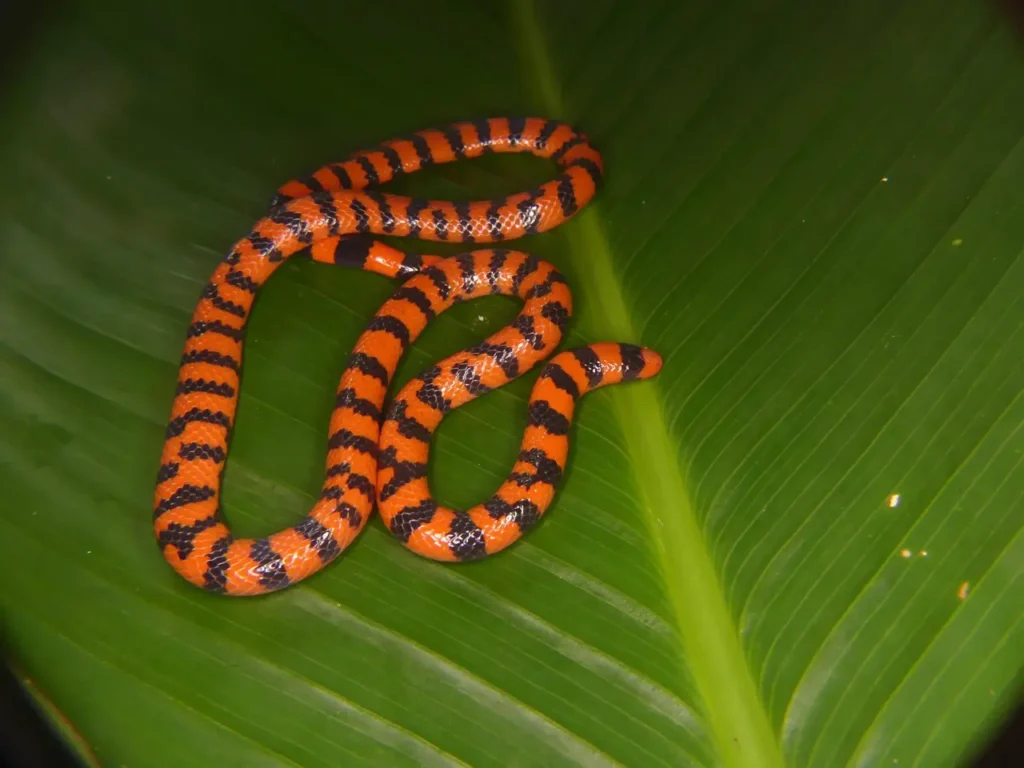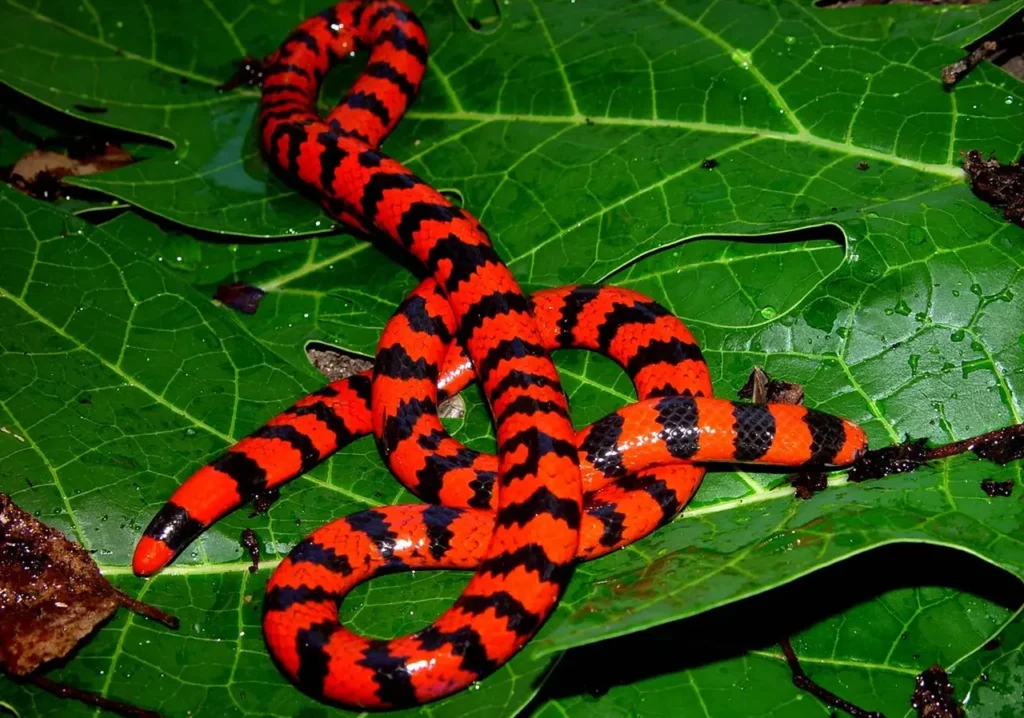The American Pipe Snake, scientifically known as Anilius scytale, is a unique and intriguing reptile found in the tropical rainforests of Central and South America. Despite its name, it does not belong to the snake family and is, in fact, a member of the infraorder Alethinophidia. In this article, we delve into the captivating world of the American Pipe Snake, exploring its distinct characteristics, habitat, diet, and behavior.

Appearance and Characteristics
The American Pipe Snake boasts a slender body, typically reaching lengths of up to three feet. Its most distinguishing feature is the ring-like patterns along its body, which gives it the appearance of a pipe or a segmented worm. These patterns vary in color, ranging from deep reds to browns and blacks, enabling the snake to blend seamlessly with its forest surroundings. Its eyes are relatively small and are adapted for low-light conditions, as the snake is primarily nocturnal.

Habitat and Distribution
This fascinating species thrives in the lush, humid rainforests of Central and South America. Its range stretches from Panama in the north to Brazil in the south, including countries like Costa Rica, Colombia, Ecuador, and Peru. The American Pipe Snake primarily inhabits areas near water bodies such as streams, rivers, and swamps, as they provide an abundant source of its preferred prey.

Diet and Feeding Habits
The American Pipe Snake is a carnivorous species with a specialized diet. It primarily feeds on amphibians, especially caecilians, which are legless amphibians that resemble snakes. With their keen sense of smell and excellent burrowing skills, these snakes can locate and capture their prey, even in the dense rainforest floor. By preying on caecilians, the American Pipe Snake plays a vital role in maintaining the balance of the ecosystem.

Behavior and Reproduction
Despite its elusive nature, the American Pipe Snake has a few known behavioral characteristics. It is predominantly a burrowing species, spending a significant amount of time underground or hidden beneath fallen leaves and debris. This behavior serves as protection against predators and helps regulate body temperature.
When threatened, the American Pipe Snake will often exhibit defensive behavior by puffing up its body and releasing a foul-smelling odor to deter potential predators. Unlike most snakes, it does not possess venom or fangs, relying on camouflage and concealment as its primary means of defense.
Little is known about the reproductive habits of this species. However, it is believed that they lay eggs rather than giving live birth, similar to many other non-venomous snakes. The eggs are likely to be deposited in burrows or in hidden locations to protect them from potential threats.

Final Thought
The American Pipe Snake is a captivating creature, with its unique appearance and specialized adaptations making it a remarkable resident of the rainforests of Central and South America. Its role in the ecosystem as a predator of caecilians highlights its importance in maintaining the delicate balance of nature. While there is much to be discovered about this species, the American Pipe Snake serves as a reminder of the astonishing diversity and complexity of the natural world and the fascinating creatures that inhabit it.